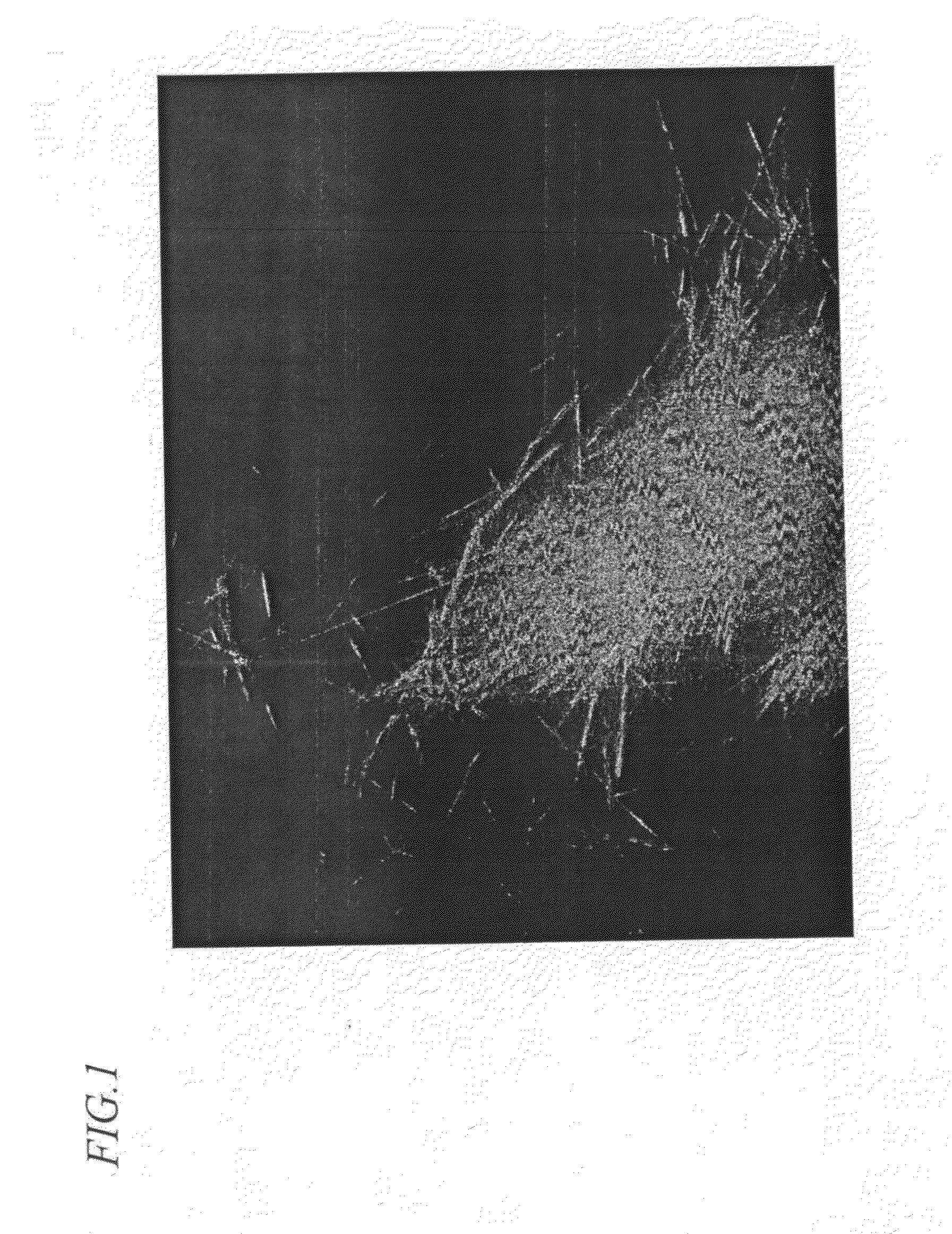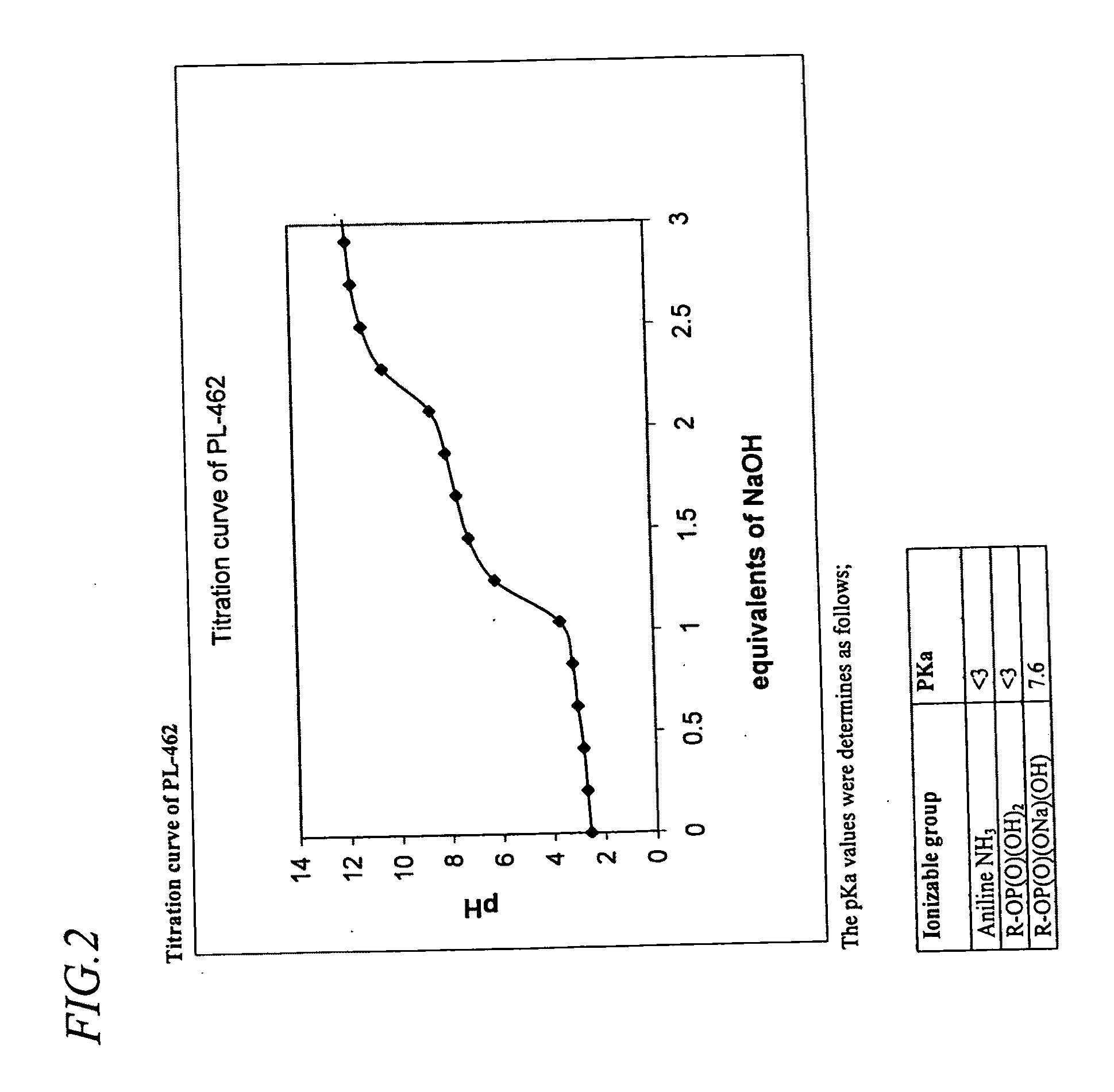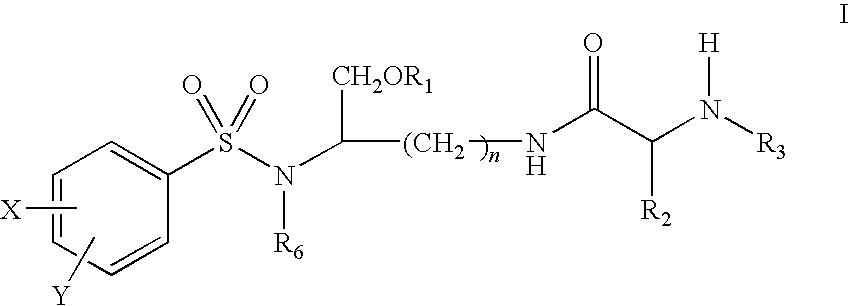Lysine-based prodrugs of aspartyl protease inhibitors and processes for their preparation
a technology of protease inhibitors and prodrugs, which is applied in the direction of biocide, phosphorous compound active ingredients, group 5/15 element organic compounds, etc., can solve the problems of high pill burden, low bioavailability, and insufficient treatmen
- Summary
- Abstract
- Description
- Claims
- Application Information
AI Technical Summary
Benefits of technology
Problems solved by technology
Method used
Image
Examples
example 1a
Preparation of (1S,5S)-(1-(5-[(4-amino-benzenesulfonyl)-isobutyl-amino]-6-phosphonooxy-hexylcarbamoyl)-2,2-diphenyl-ethyl)-carbamic acid methyl ester (PL-461)
[0261]The preparation of the title compound is based on schemes 1, 2A of this invention.
Step A. Preparation of (3S)-3-isobutylamino-azepan-2-one (IV)
[0262]L-α-amino-,-caprolactam (22.0 g) was dissolved in cold dichloroethane (DCM, 200 mL). isobutyraldehyde (12.6 g) was added slowly and stirred until the heat evolved was dissipated (water forms at the surface). The cold solution was added to 46.5 g of powdered NaBH(OAc)3 in DCM (0.5. L). AcOH (70 mL) was added to the solution. The slightly turbid mixture was stirred at 20° C. for 4 h. A 500 mL solution of 2M NaOH was added slowly to the turbid mixture and the pH adjusted to 11 using a concentrated NaOH solution, and then the mixture stirred for a further 20 min. After extraction, the DCM layer was dried with MgSO4, filtered and evaporated. The oil thus obtained crystallizes slow...
example 1b
Alternative preparation of (1S,5S)-(1-{5-[(4-amino-benzenesulfonyl)-isobutyl-amino]-6-phosphonooxy-hexylcarbamoyl}-2,2-diphenyl-ethyl)-carbamic acid methyl ester (PL-461)
[0285]The procedures used for these processes are summarized in schemes 2B-2D.
Step a. Synthesis of {4-[(5-tert-Butoxycarbonylamino-1-phosphonooxymethyl-pentyl)-isobutyl-sulfamoyl]-phenyl}carbamic acid tert-butyl ester (VIII)
[0286]To a cooled solution of VII (17 g, 31 mmol) and pyridine (30 mL, 372 mmol; Aldrich Chemical Company) in 200 mL of methyl iso-butyl ketone (Aldrich Chemical Company) was added dropwise neat phosphorous oxychloride (8.4 mL, 93 mmol; Aldrich Chemical Company). Cooling was removed following the addition and the mixture containing a white precipitate was stirred for 12 hours at room temperature. The solution was then poured into 600 mL of cold (ice bath) aqueous 1N HCl. The biphasic mixture was heated to 50° C. and stirred vigorously for 2 hrs. The cooled mixture was decanted. The aqueous phase ...
example 2
Preparation of (1S,5S)-(1-{5-[(4-amino-benzenesulfonyl)-isobutyl-amino]-6-phosphonooxy-hexylcarbamoyl}-2,2-diphenyl-ethyl)-carbamic acid methyl ester sodium salt (PL-462)
[0293]70.7 mg of the final product of either examples 1A or 1B is added to 1 mL 0.1 N NaOH and diluted with 1 mL of distilled water. The Solution is then frozen and lyophilized. Yields 67.2 mg (92%) of the desired material with 95% purity.
[0294]1H NMR (CD3OD): δ 0.72-0.83 (m, 1H), 0.90 (d, J=5.8, 9H), 1.26-1.38 (m, 1H), 1.53-1.65 (m, 1H), 1.88-2.00 (m, 1H), 2.60-2.70 (m, 1H), 2.79-2.89 (m, 1H), 2.98-3.00 (m, 1H), 3.00-3.08 (m, 1H), 3.54 (s, 3H), 3.58-3.71 (m, 1H), 3.72-3.83 (m, 1H), 3.84-3.95 (m, 1H), 4.28 (d, J=11.1, 1H), 4.91 (d, J=11.0, 1H), 6.70 (d, J=7.6, 2H), 7.12-7.22 (m, 2H), 7.22-7.32 (m, 6H), 7.33-7.40 (m, 2H), 7.50 (d, J=7.7, 2H).
[0295]31P NMR (CD3OD): δ 3.13
[0296]Crystals of the PL-462 compound were obtained as follows. Ten grams (10.00 g) of PL-461 (14.2 mmol) was weighed out. Thirty milliliters (30 mL)...
PUM
| Property | Measurement | Unit |
|---|---|---|
| pH | aaaaa | aaaaa |
| pH | aaaaa | aaaaa |
| temperature | aaaaa | aaaaa |
Abstract
Description
Claims
Application Information
 Login to View More
Login to View More - R&D
- Intellectual Property
- Life Sciences
- Materials
- Tech Scout
- Unparalleled Data Quality
- Higher Quality Content
- 60% Fewer Hallucinations
Browse by: Latest US Patents, China's latest patents, Technical Efficacy Thesaurus, Application Domain, Technology Topic, Popular Technical Reports.
© 2025 PatSnap. All rights reserved.Legal|Privacy policy|Modern Slavery Act Transparency Statement|Sitemap|About US| Contact US: help@patsnap.com



